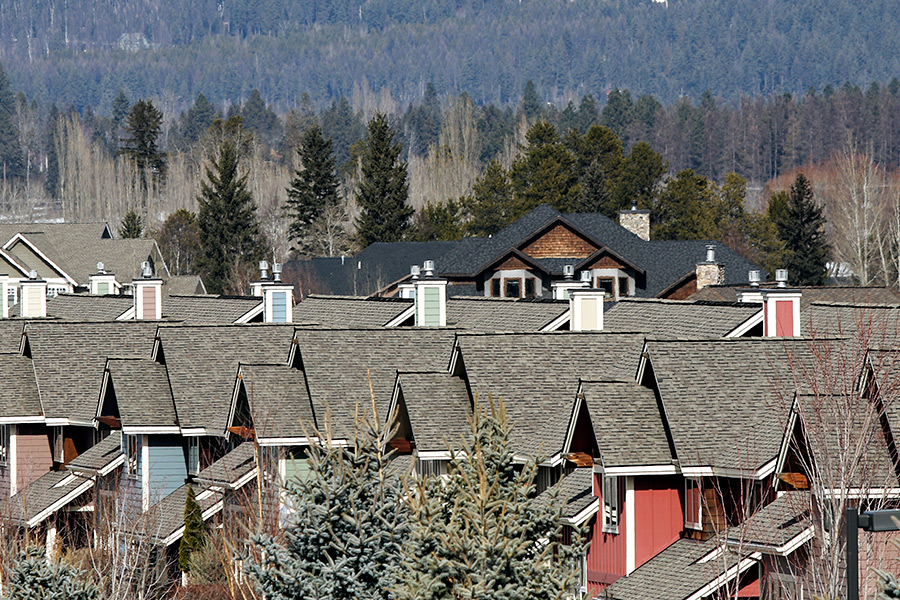WHITEFISH – Business members of the Whitefish Chamber of Commerce met on June 21 to discuss the importance of affordable housing for employees in Whitefish, a topic that has reared its head in recent years as businesses complain of not being able to hire and keep enough workers.
The meeting was centered on introducing the work consultants are doing to establish a baseline for needs, which will then theoretically lead to more efficient solutions for housing.
The June 21 meeting was another in a series of meetings to discuss the affordability of living in Whitefish. In January, the Whitefish City Council began discussions about the issue, listening to a wide breadth of community members’ concerns.
Recently, the council hired Rees Consulting of Crested Butte, Colorado to build a comprehensive Housing Needs Assessment for the city. The consultants have worked with multiple mountain resort towns struggling with maintaining affordability for workers, including Colorado ski towns Breckenridge, Aspen, and Steamboat Springs.
Business leaders present at the chamber meeting drew a stark picture of their hiring woes in the last few years. They batted around theories for the worker shortage, including a lack of work ethic, but eventually settled on housing as the main issue.
Wendy Sullivan, the principal consultant with WSW Consulting out of California, told the owners and managers about the importance of participating in the upcoming survey that will be sent to Whitefish businesses in August, seeking specific employment details.
The report generated from the survey will be ready in September, she said, and then the city is supposed to begin the next phase of the project: developing strategies for addressing the problems.
Paula Greenstein, co-owner of Wasabi Sushi Bar and Ginger Grill, said finding people to hire and holding on to them hadn’t been a problem until recently.
“We got hit for about three years really hard,” Greenstein said. “We don’t have enough people who want to stay in a job long enough.”
Many of her workers have been on staff for years, she said, and were fortunate enough to take advantage of a low real estate market and purchase homes following the recession. But it’s been difficult to find workers who want to stay for more than a year or two, Greenstein said, let alone a season.
An informal survey of the businesses present at the meeting showed a majority of their workers commute to Whitefish for work. Two of the 18 employees at Shopko live in town, while the rest live in Columbia Falls. The Subway sandwich shop pays workers from Kalispell extra to account for the gas used to drive 15 miles each way.
“They’re starting to live, really, in Columbia Falls,” Greenstein said of her workers as well.
Ken Stein, a broker with PureWest real estate, said the affordability indexes in Columbia Falls and Kalispell aren’t too far off from Whitefish’s, though the rent and home prices in the other two cities aren’t increasing as quickly as Whitefish’s.
A lack of affordable housing valley-wide puts pressure on the existing rentals, he said.
“Rents have gone up dramatically in the valley,” Stein said.
Whitefish city manager Chuck Stearns said the city’s impact fees make it more expensive to build in than other cities, but that hasn’t stopped construction of new homes. But those homes are typically on the high end of the price range, he said.
“We do need more rentals in town,” Stearns said.
Discussion turned to possible solutions, including businesses banding together to build apartments or even forming a workers’ village in Columbia Falls with frequent shuttles to Whitefish.
But Kevin Gartland, executive director at the Whitefish Chamber of Commerce, said the idea is to keep people in the city, so when they’re not working, they’re participating in the community through volunteering, going to church, building a family, and spending their money.
The solution will most likely come from a combination of public and private sector efforts, Gartland said. There’s a need for rentals in the $700 to $1,000 range, but private developers are largely driven by profit, and would most likely balk at making less money than they could.
“The private sector has not come to the fore,” Gartland said.
Another major concern from the business owners and managers was the study itself, and the fear that the city would look at the issue once again and then take no action on the resulting information.
Gartland assured them there would be a second phase to determine how best to tackle the problem, and that the board at the Chamber of Commerce is chomping at the bit to get to work.
“It’s very important to participate in that study,” Gartland said.
